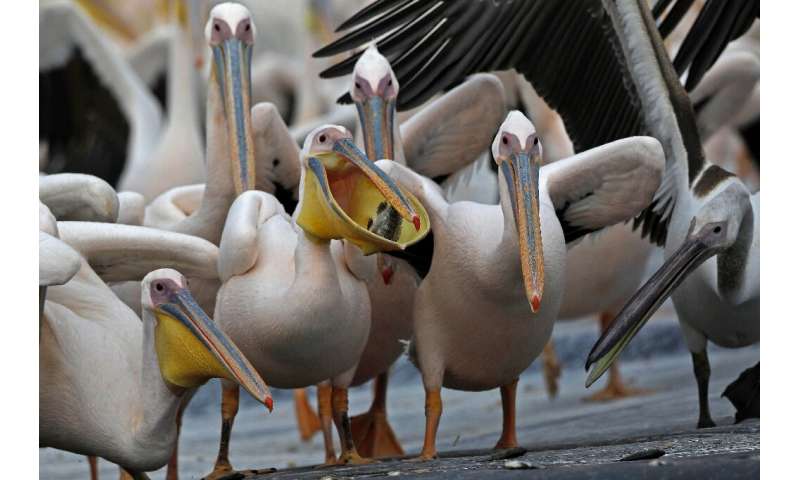Corpses
of short-tailed shearwaters have been spotted at several shorelines
The birds
are migrating back to southern Australia to breed but dying on way
Krill and
other fish they feed on have dwindled due to sea temperatures rising
PUBLISHED: 04:09,
18 November 2019 | UPDATED: 12:08, 18 November 2019
Hundreds
of dead birds are washing up on Sydney's iconic beaches.
The
corpses of short-tailed shearwaters have been spotted at several shorelines
including Bondi, Manly and Cronulla.
The birds
are migrating back to southern Australia to breed after spending the summer in
Alaska.
Hundreds
of dead birds are washing up on Sydney's iconic beaches. Pictured: The
corpses of short-tailed shearwaters on an Australian beach in October
But,
according to experts, a higher number than usual are dying on the way due to a
lack of food.
The birds
need to be at full strength to make the 14,000km trip over the Pacific but the
krill and other fish they feed on have apparently dwindled due to sea
temperatures rising.
Each year
around 30,000 birds land at Griffiths Island at Port Fairy in Victoria but
this time only half that number have made it, according to Peter Barrand,
the president of BirdLife Warrnambool.
Explaining
why, he told Yahoo News: 'Water temperatures are rising, the fish
shearwaters feed on are not coming into the shallows.
'There's
certainly something that's going drastically wrong'.
The
Short-tailed Shearwater is Australia's most numerous seabird.
During
breeding season, millions converge on many small islands from NSW to Western
Australia, with their stronghold in Bass Strait.
After
their chicks are large enough to fend for themselves, the adults leave the
breeding islands and migrate north-east, flying on a broad front through the
central Pacific Ocean, where immense numbers were seen by Captain Cook.
They
spend the southern winter at sea in the northern Pacific, off Japan, Siberia
and Alaska.
BirdLife
Australia has rendered the problem a 'crisis'.
In a
statement on its website, the group says: 'For the fifth consecutive year, the
sea surface temperatures off Alaska have been unusually warm, which has led to
a dire shortage of the shearwaters' marine prey, resulting in thousands of dead
shearwaters being washed ashore along Alaska's beaches.
 Great white pelicans eat fish provided by Israeli farmers at a water reservoir in the Emek Hefer valley north of Tel Aviv
Great white pelicans eat fish provided by Israeli farmers at a water reservoir in the Emek Hefer valley north of Tel Aviv